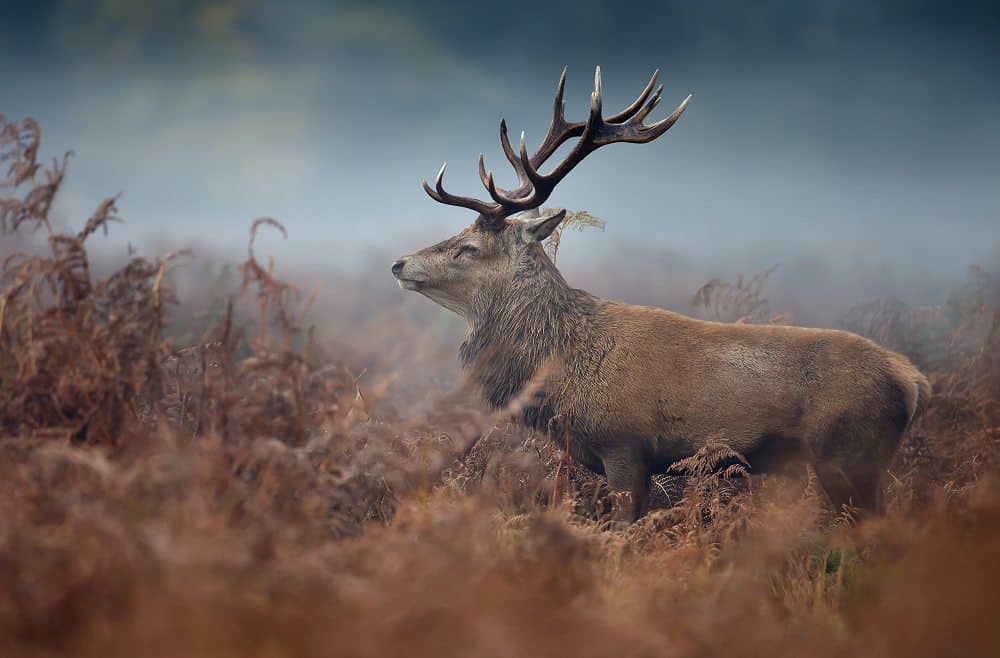Wondering what went right this week in the conservation world? We’ve got you covered with our Conservation Optimism Round-Up! We are collating stories of optimism from around the globe so that you never miss your dose of weekly motivation.
(Featured image credit: Wild About Denmark)
1. Incredible conservation success in Nepal: tigers, forests, and community
As shared by the UN Environment Programme, the conservation flagship landscape ‘Terai Arc’, which spans India and Nepal, is celebrating their accomplishments in increasing tiger population, restored forest areas, engaged local community members, and more!
Tiger population tripled from 112 to 335.
— UN Environment Programme (@UNEP) February 22, 2024
66 hectares of forest restored.
40,000 community members engaged.
Incredible conservation efforts from the new #GenerationRestoration Flagship @WWFNepal show how humanity and nature can live together in harmony.
2. Australia expands the Casuarina Coastal Reserve, protecting endangered species
“The reserve will expand to include a 34-hectare lot (Lot 9458) to ensure protection of the dry monsoonal rainforest that is home to some of the Territory’s most iconic endangered species, the Black-footed Tree-rat and Croton habrophyllus, the host plant for the endangered Atlas Moth.
Casuarina Coastal Reserve is one of the Territory’s most popular parks, receiving more than one million visitors a year who exercise and enjoy the natural beauty of the coastal habitats between the estuaries of Rapid Creek and Buffalo Creek.”
Thanks to #conservation efforts, #Australia has expanded the Casuarina Coastal Reserve to conserve the dry monsoonal rainforest and home of the #endangered Black-footed Tree #Rat!#conservationoptimism #LetNatureThrive Photo: Joel Sartorehttps://t.co/Im7fdPR6Fa pic.twitter.com/fVwcB76B5M
— Global Conservation Solutions (@_GCS_) February 23, 2024
3. London’s Epping Forest valued at £1.9bn to society over the next 50 years
“Natural Capital Solutions, a company specialising in biodiversity, assessed the health, air and water quality benefits of the woodland. The City of London Corporation said the forest was nine times the size of New York’s Central Park and attracted more than 10 million visitors per year. It is home to more than one million trees, including 50,000 ancient pollards of beech, hornbeam and oak. Eight listed buildings and four scheduled ancient monuments can also be found there.
"The forest [is] nine times the size of New York's Central Park and attracts more than 10 million visitors per year. It is home to more than one million trees, including 50,000 ancient pollards of beech, hornbeam and oak."https://t.co/Sqen6xlPUy#rewilding #conservationoptimism
— Citizen Zoo (@CitizenZoo) February 24, 2024
4. South Africa’s third-largest reserve restores iconic species to the Great Karoo
“Samara Karoo Reserve has pioneered the rewilding of the Great Karoo in South Africa for over a quarter of the century. […] Through habitat restoration and species reintroductions underpinned by research and supported by ecotourism, they have successfully restored 67,000 acres of land, reintroduced the first cheetah, black rhino, elephant and lion in over a century – and created the catalyst for the creation of South Africa’s third largest protected area covering three million acres.”
Thanks to 25 years of #conservation efforts, 67,000 acres have been restored in South #Africa's Great #Karoo, including the #reintroduction of species like the elephant, black rhino, and #Cheetah!
— Global Conservation Solutions (@_GCS_) February 25, 2024
#conservationoptimism #LetNatureThrive Photo: EWThttps://t.co/gyFINKBsaz pic.twitter.com/tUEiJv8wYN
5. After Years in Captivity, Rescued Harpy Eagles Are Flourishing in the Wild
“It was logging of the giant kapok trees that cradled their nests that led to the 2018 rescue in Bolivia of two unrelated Harpy Eagle chicks just a month apart. Roque and Luna, as the male and female nestlings were named, were brought to a wildlife rescue center in the city of Santa Cruz de la Sierra and slowly nursed back to health.
[…] Despite [the conservationists’] fears, the eagles haven’t just survived; they are thriving. […] transmitter data show that they have been exploring the area to establish territories of their own. The pace of their activity also indicates that they’ve been acquiring enough energy by hunting. […] [A]fter three months of careful observation, the team officially declared the reintroduction a success.”
After logging brought down the nests of two young Harpy Eagles in Bolivia, dedicated conservationists spent years preparing the majestic birds for a return to the wild. https://t.co/9snoJmqPp5
— Audubon Society (@audubonsociety) February 22, 2024
6. Breeding population of ‘incredibly rare’ freshwater turtle discovered in India
“Known for its rarity and secretive nature, this species has long been a subject of fascination and concern among conservationists. […] By talking to local villagers, the group were able to systematically document sightings of the turtle and engaged communities in conservation efforts This work led to the first documentation of a female nesting, and the rescue of eggs from flooded nests. The hatchlings were later released into the river.”
The team, led by Ayushi Jain from the Zoological Society of London’s Edge of Existence Programme, is now working on setting up a community hatchery and nursery. She said: “The community’s willingness to engage formed the backbone of our project. It allowed us to record not just fleeting glimpses of the turtles but evidence of a reproductive population. It’s a discovery that rewrites the narrative of a species thought to be vanishing from India’s waters.”
@EDGEofExistence Fellow @chelonia_crania led a team working with local people in India to better understand one of the rarest turtle species – the Critically Endangered Cantor’s Giant Softshell Turtle https://t.co/N8Z1IWCbFb
— ZSL (@OfficialZSL) February 23, 2024
7. Ambitious Danish rewilding initiative joins the European Rewilding Network
Saksfjed Vildmark (“Wilderness”) is located at the southern tip of the Danish island of Lolland. The 800-hectare site, a coastal area comprising meadows, wetlands and woodlands, was once largely used for agriculture, and is now managed by the Hempel Foundation – a Danish philanthropic organisation.
Starting in January 2023, the foundation has been working to actively rewild nature here, based on the restoration of natural processes. Moving forwards, the area will be allowed to develop into a wilder area of open grassland with scattered vegetation, open forests, and wetlands, grazed by bovines and wild horses.
“Denmark is a country with some of the lowest levels of wild nature in the world,” says Anders Holm, CEO of the Hempel Foundation. “The Saksfjed Wilderness initiative will help to change that”
A warm welcome to the Saksfjed Wilderness initiative from Denmark, officially joining the #EuropeanRewildingNetwork! 🇩🇰 Spearheaded by the Hempel Foundation, it is set to transform a vast coastal area into a thriving haven for wildlife and nature enthusiasts alike 🦋🌾 #Rewilding pic.twitter.com/fHe4qTK0v6
— Rewilding Europe (@RewildingEurope) February 21, 2024


